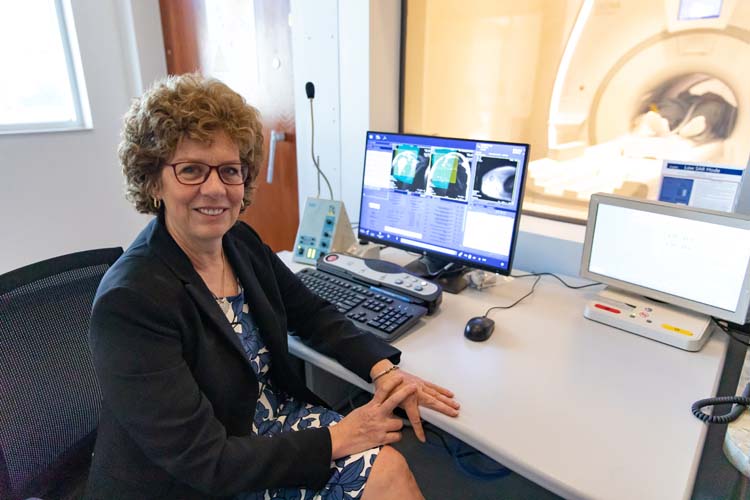
Christmas came early this year to the folks at Vero Radiology Associates.
In fact, it has already come twice for those at the facility on 11th Circle, across from Indian River Medical Center.
While most of us were busy planning our Thanksgiving get-togethers, Dr. Heather Nagel and the rest of the staff at VRA were just wrapping up their first month with a valuable new present: a brand-new Signa Architect 3.0T wide-bore magnetic resonance imaging (MRI) scanner system.
This newest addition followed a kind of ‘Christmas in July’ when VRA added a new 384-slice, dual source, dual energy computed tomography (CT) scanner, a new positron emission tomography (PET) scanner, and an upgraded 3D tomosynthesis scanner for mammograms.
MRI “is a non-invasive imaging technology that produces three-dimensional detailed anatomical images without the use of damaging radiation,” according to the National Institutes of Health.
“MRIs employ powerful magnets which produce a strong magnetic field that forces protons in the body to align with that field. When a radio-frequency current is then pulsed through the patient, the protons are stimulated and spin out of equilibrium, straining against the pull of the magnetic field. When the radio-frequency field is turned off, the MRI sensors are able to detect the energy released as the protons realign with the magnetic field,” producing detailed images of the body’s organs, soft tissue, bones and its circulatory system.
The SignaArchitect 3.0T is a significant upgrade from the MRI device Vero Radiology Associates had been using for the past 12 years, giving the Nagle and her colleagues a new ability to see how much damage a heart attack caused to a patient’s heart.
According to Nagel, “this new Architect [system] is pretty much outfitted to meet just about every current imaging need that we have. It offers us additional high-quality imaging for oncology work, for breast work and for prostate. It also allows us to do cardiac MRIs.”
The 12-year-old MRI system wasn’t sensitive enough to do cardiac scans, but Nagel says the new machine will “allow us to do things like determine tissue viability after a myocardial infarction or a heart attack.”
The new system will also help doctors get a better idea what is going on with other common conditions. “Probably the most common thing we do is orthopedic work,” Nagel says, “looking at shoulders, hips and knees, and spines. The second most common thing would be neurology, including stroke evaluations and dementia.”
Of course, that kind of flexibility and enhanced imaging capability comes at a price.
The Signa Architect 3.0T system carried a price tag in the $1.8 million range, and in an impressive display of transparency, Nagel adds that the cost of retrofitting the VRA building to accommodate the new scanner wasn’t cheap, either.
An $800,000 renovation that took several months to complete was needed to accommodate the new system.
Speaking of transparency, Nagel is quick to point out that while the new equipment is designed with a “wide bore” layout that’s intended to make patients more comfortable – compared to the narrow tunnel in older machines – it isn’t an “open MRI.” But that’s for a good reason. “Open magnets,” she says, “reduce the image quality.”
All that said, caution is required with MRI scanners. Various medical implants, including pacemakers, artificial joints, artificial heart valves, cochlear implants or metal plates, screws or rods can pose a hazard. The implants can move or heat up in the magnetic field and cause serious problems.
Dr. Heather Nagel is the director of the women’s imaging center at Vero Radiology Associates at 3725 11th Circle. The phone number is 772-562-0163.



